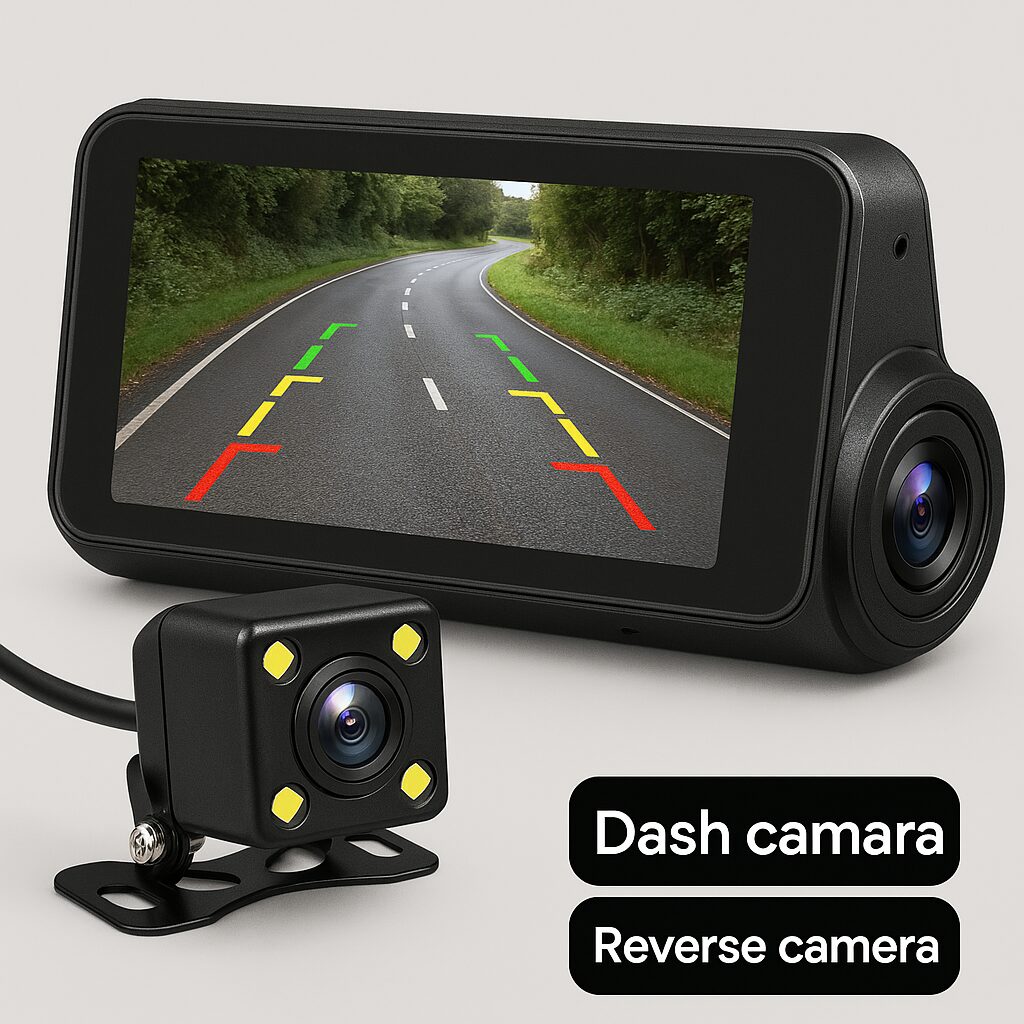Wired vs. Wireless Reverse Camera Setups: Which One Should You Pick for a Dash Cam with Reverse Camera
Introduction
When it comes to choosing a dash cam with a reverse camera, one of the biggest decisions drivers face is whether to go for a wired setup or a wireless one. Both options provide safety and convenience, but each comes with its own benefits and drawbacks. For Australian drivers—whether navigating city streets, rural roads, or towing caravans—picking the right system can make all the difference. Brands like Elinz offer both wired and wireless solutions, giving you flexibility depending on your needs.

Wired Dash Cam with Reverse Camera
How It Works
A wired dash cam with a reverse camera connects the front dash cam to the rear camera using cables. This setup ensures a stable and reliable signal, as the video feed travels directly through the wiring without interference.
Benefits of Wired Systems
-
Reliability: A wired connection rarely drops out, making it dependable in all weather and terrain.
-
Clear Video Quality: Without wireless interference, you can expect sharp footage day and night.
-
Great for Permanent Installations: Ideal if you plan to keep the camera system in the same vehicle long-term.
Many wired systems also integrate well with a reverse camera with a dash cam display, offering seamless parking assistance for a rear view camera for a car.
Drawbacks of Wired Systems
-
Installation Effort: Running cables from the dash to the rear of the vehicle can be time-consuming.
-
Less Flexible: If you switch vehicles often, wired setups are not as convenient to move.
-
Not Always Caravan-Friendly: For larger vehicles like caravans, long cable runs can be challenging.
Wireless Dash Cam with Reverse Camera
How It Works
A wireless dash cam with a reverse camera transmits video signals from the rear camera to the display using radio frequency or Bluetooth technology. This eliminates the need for long wiring.
Benefits of Wireless Systems
-
Easy Installation: No need to route cables through the vehicle.
-
Great for Larger Vehicles: Perfect for caravans and RVs, as a rear camera for caravans can transmit signals without messy wiring.
-
Flexibility: Easy to move between vehicles, making it ideal for drivers who own more than one car.
Premium wireless setups, such as those from Elinz, often include Bluetooth reversing camera options, offering stable connectivity.
Drawbacks of Wireless Systems
-
Signal Interference: Wireless signals may be affected by other devices or terrain.
-
Battery Dependence: Some wireless cameras need their own power source.
-
Higher Cost: Wireless systems tend to be more expensive than wired ones.
Which Dash Cam with Reverse Camera Should You Choose?
Everyday Cars and Utes
For daily commuters and family vehicles, a wired dash cam with a reverse camera is often the best choice. It provides stability and reliability, and when combined with a front and rear dash cam, it offers complete coverage.
Caravans and RVs
For larger setups, a wireless system is usually the better option. A wireless reverse camera or even a wireless dash cam and backup camera combo makes it easier to manage the longer distance between front and rear. Caravanners benefit from improved safety when reversing into tight campsites or fuel stations.
Premium Needs
If you want extra features, a mirror dash cam with reverse camera or a dual dash cam with backup camera can provide advanced options like GPS, night vision, and wide-angle lenses. Many of these are highlighted in reviews for the best dash cam with reverse camera 2025.
Why Elinz Stands Out in Australia
Elinz is a trusted brand offering both wired and wireless dash cam solutions. Their products are designed to meet the needs of Australian drivers, from city commuters to caravan owners. With options including Bluetooth reversing camera technology, wide-angle lenses, and smart connectivity, Elinz ensures that drivers have access to reliable, high-quality equipment for any vehicle type.
FAQs about Dash Cam with Reverse Camera
1. Which is more reliable: a wired or a wireless dash cam with a reverse camera?
Wired systems are more reliable due to stable connections. Wireless systems are also reliable but may face minor interference in some areas.
2. Is installation harder for a wired system?
Yes, installing a wired setup can take more time as cables need to be routed through the vehicle. However, once installed, it provides consistent performance.
3. Can a wireless reverse camera work on a caravan?
Yes. A rear camera for a caravan with wireless transmission is ideal because it eliminates the need for long cable runs.
4. Do wireless systems use Bluetooth?
Some premium models, such as Bluetooth reversing camera setups from Elinz, use Bluetooth for seamless connectivity. Others may use radio frequency.
5. Which is the best dash cam with a reverse camera in 2025?
While it depends on individual needs, many drivers in Australia trust Elinz for their combination of affordability, durability, and advanced features.
Conclusion
Choosing between a wired and wireless dash cam with a reverse camera depends on your vehicle type, budget, and how you plan to use it. Wired setups are dependable and cost-effective, while wireless systems offer flexibility and convenience, especially for caravans. For Australians who value safety and practicality, brands like Elinz provide a variety of options—ensuring there’s a perfect fit for every driver.